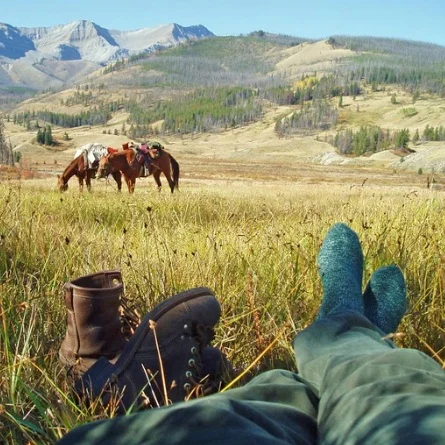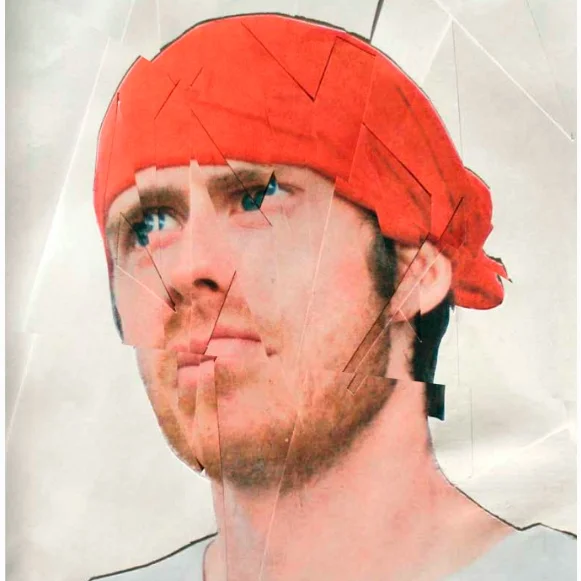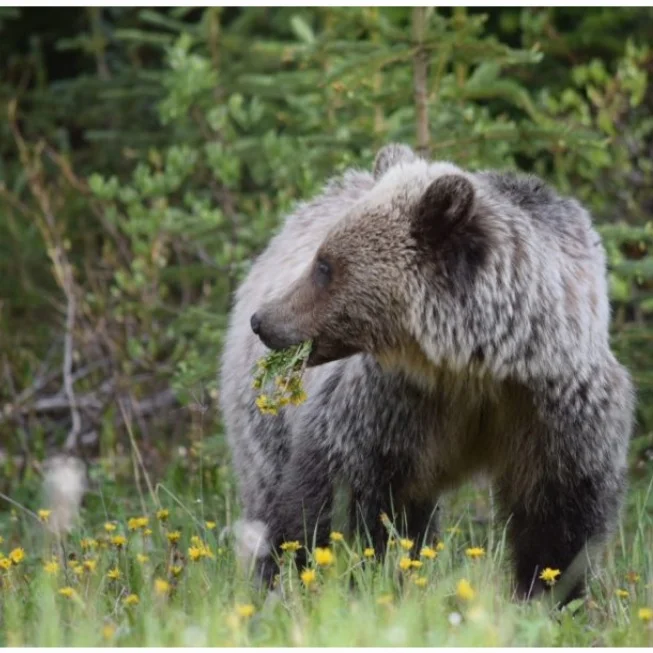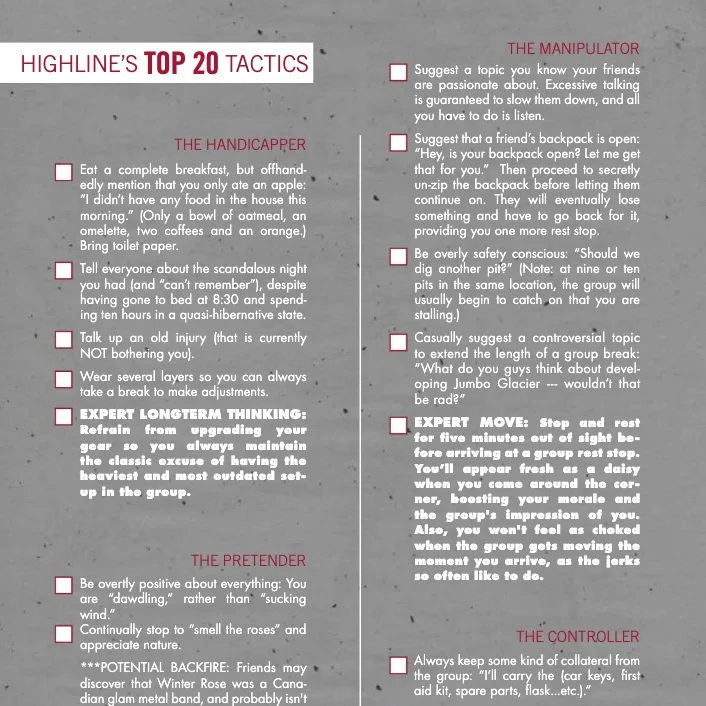A Flyfishing Odyssey
Story by Gerry Stephenson.
Highline Magazine, Summer 2015 edition.
Photo by Stu Tripney.
“I fish because I love to: because the environs where trout are found are invariably beautiful—, because trout do not lie or cheat and cannot be bought or bribed— but respond only to quietude and humility and endless patience; because I suspect that men are going along this way for the last time and I for one don’t want to waste the trip.” Robert Traver, Anatomy of a Fisherman, 1964
Seventy-three years ago, when I was 10, my father took me fishing in his heavy, clinker built boat. Powered by a 1¼ horsepower British Seagull outboard motor, we braved a stormy ocean to fish with hand lines for plaice and cod. I was violently sick and frightened by the huge waves, but I caught fish and was deliriously happy. I was also infected with a bug that has given me some of the most exciting, rewarding and beautiful experiences of my life. Thanks, Dad.
“A host of golden daffodils,
Beside the lake, beneath the trees,
Fluttering and dancing in the breeze.” William Wordsworth, 1770-1850
In the 1940s I fished the streams of the English Lake District where I lived with my parents, in the same area where William Wordsworth and his fellow poets lived and wrote in the late 18th century, inspired by the beauty of England’s wildest landscape. Tumbling from England’s highest mountains, clear waters held small trout. Making a rod and reel from the aerial off of an old WWII tank, as well as parts from my Mecanno set, I began a journey that would last a lifetime. Learning about the behaviour of the trout (sporadically getting everything right), I began to catch the small, eight-inch variety on wet flies settled just under the surface, encountering the occasional monster of 10 inches..
“There is no taking trout in dry breeches.” Don Quixote by Miguel De Cervantes, 1605.
Having left home at 18, I spent three years at Nottingham University, scraping through the exams to finish with a mining degree. I was living a short motorcycle ride from the trout streams where Izaac Walton, author of The Compleat Angler, had fished for trout 300 years before, and, having acquired a real fly rod, I went to fish the River Dove, its spring fed waters home to some of the most beautiful, vigorous and canny trout in England. They lay in numbers, finning quietly in translucent water between the beds of weed that nourished the insect life where the fish fed. Every so often I would see the wink of a trout’s white lip, exposed as it sucked in a sub-surface nymph. I watched as hundreds of nymphs swam to the surface where they struggled to break out of their nymphal husks while hungry trout lingered hidden beneath the water’s surface. Then ephemeral clouds of hundreds of mayflies would appear, dancing and mating in flight above the stream, dipping to the water to brush away the eggs of unborn mayflies before alighting on the surface, only to expire. I saw the trout rising to sip these mayflies from the surface before, and even after, they took flight.
My hands shook as I tied my best impression of a suitable imitation fly on the (hopefully) invisible leader, then flicked it out, upstream of a rising fish. My breath caught as the fly carried to the feeding lane of the fish and over my quarry.
Nothing.
Not even a flicker of interest, even after a hundred casts… total rejection. Cast after cast, different flies, but the same result.
Photo by Dane Ulsifer.
Despite going home fishless, a miracle was about to happen. As I trod solemnly, homeward, my sodden and bedraggled “imitation” glided over a gap between weed beds, and a large fat trout rose calmly to show its olive green, red and black spotted back and pure gold sides. Slowly, it rose towards my meager offering, slipped beneath it, and drifted downstream with its nose under the fly. Then, with a disdainful flick of its tail, it vanished. I had just witnessed what I would realise was the most rewarding of fishing experiences: attracting a visible trout feeding on natural insects, my homemade fly having the right size and shape of an artificial, and then manipulating the line, so that my offering floated dragless over a feeding fish. The wild trout was, for a few brief seconds, drawn to consider my artificial to be a real insect. If the trout was not hooked, I was… for life!
Working in the British coal industry from 1952 to 1960, I dug coal by hand from a 20-inch coal seam under the Irish Sea for $2.50 a day. Later, as an underground manager, I fly-fished the Lake District streams every spare moment.
“…about fishing. Though the sport of kings, it’s just what the deadbeat ordered.” Thomas McGuane, 1978
In 1968, after five years in a trout deficient part of Northeast India, I worked for a consulting company in London who ordered me to the Sinai Desert in Egypt to build a new underground coal mine. Thankfully, I refused to go; so they fired me. Always wanting to go to Western Canada, I hopped on a plane for Calgary and the mining town of Canmore — population 1,000 lucky souls — for an interview as chief engineer of Canmore Mines Limited Walter Riva, the president, offered me the job at $900 a month. Tempted to say yes, instead I answered: “Walter, I had better talk to Avice and make sure she is okay with this.” Walter suggested we look at a piece of riverfront land that I could have for $500. Walking through the bush to the Bow River, I saw mayflies drifting down, with good-sized brown trout sipping them. Fly-fishing was not a high priority for “she who must be obeyed,” but I decided to risk wifely wrath (not for the first time) and go back to Walter’s truck.
“You know Walter I’m sure my wife is going to be happy here.”
“There is a very fine line between fly fishing and standing in the water looking like an idiot.” Gerry Stephenson, 2015
To arrive in Alberta and discover that, for the price of a licence, I could fish any water in the province. This surely was what nature intended — rivers and streams were never intended to be owned and commercialized, as in Great Britain and Europe.
“Tis not all of fishing to fish.” Izaac Walton, 1653
Back then, the Bow was a fine river with a good population of brown trout. Soon, I found out the value of small, blue winged olives on cool cloudy days and of grasshoppers and ants on hot windy days. I would walk up the game trails on the Mt. Rundle side for three or four kilometres then return in pitch darkness. There were only three fly fishermen in town with 13 km of river to share. I would mark trout over 15 inches long with a tiny identifying cut on the adipose fin and soon calculated that half of the fish I caught were trout I had netted and released up to four times. “George” was a particular favourite since he rose in the same place, at the same time, for three years!
“But now the sport is marde, and whott ye why, fishes decrease, and fishers multiply.” Thomas Bastard, 1598
Gradually, though, fishing on the Bow deteriorated; perhaps too many fishermen or perhaps siltation. Many trout were there still, but most were quite small.
Summer 2015 cover.
Then Gary Ellenton, a fishing buddy, introduced me to streams in Alberta like the Highwood, the Livingstone and the Oldman flowing off the eastern slopes of the Rockies. The clear, green-tinted water, the riffles and pools, the waterfalls and the canyons were astounding. Cutthroat trout aplenty, often willing to take a dry fly, could be seen, stalked, sometimes caught, but always released. I began to appreciate the unspoiled wilderness areas from which these lovely waters flowed , whilst also realising how this dream could end if we did not keep a watchful eye on timber extraction, mining, drilling and development. If 68 years of fly fishing has taught me anything, it is that the waters we love are fragile and easily destroyed by incompetent management, ignorance and, ultimately, greed,— all of which seem to proliferate in our “modern world.”
“Greedy little minds are ever busy turning landscapes into slag heaps, freeways and shopping malls, a perversion they zealously pursue under the ragged banner of progress.” Sheridan Anderson, The Curtis Creek Manifesto, 1978
Now, well into my eighties, a carbon fibre rod has replaced the tank aerial of 1946, though I still have my first real fly rod made of split cane. Battered and bruised, its wrappings frayed and ferrules loosened, I will keep it for a while yet, for a treasured rod, like a good friend, cannot be replaced. I still use fly reels made in Great Britain 40 years ago, with a click drag that screams like a banshee when a good fish runs hard. Two years ago this ancient reel landed my biggest trout ever, 11 and a half pounds on a four-pound leader; a fish that led me on a merry chase through 200 yards of white water.
I fish mainly with the Two Garys, Ellenton and Anderson, both of them spectacularly crazy about fly fishing. Ellenton, about my age, who, born and raised in Alberta, loves the same streams he fished as a boy and, when we fish together, spends half of his time sitting on a rock, contemplating the stunning beauty of the water and our surroundings. Anderson was born and raised in South Africa, and, after 28 years fishing and playing football in the United States, he saw the light, arrived in Canmore with Kay for a week’s vacation, and has been here for 10 years. He levered me down a steep cliff face to fish the Livingstone River last year and, equally importantly, hauled me back out at the end of a long day!
“…when the lawyer is swallowed up with business and the statesman is contriving plots, then we sit on cowslip banks, hear the birds sing, and possess ourselves in as much quietness as these silent silver streams…” Izaac Walton, The Compleat Angler, 1653










